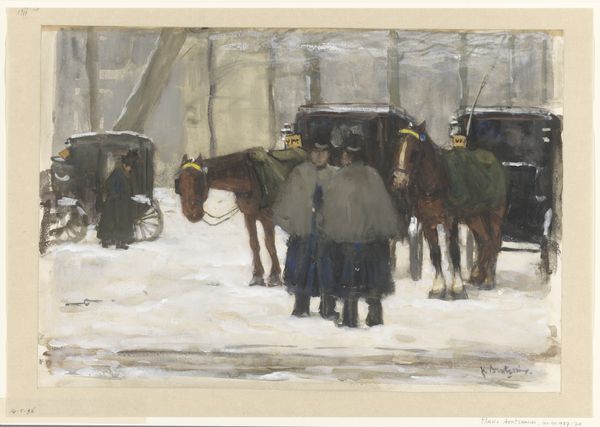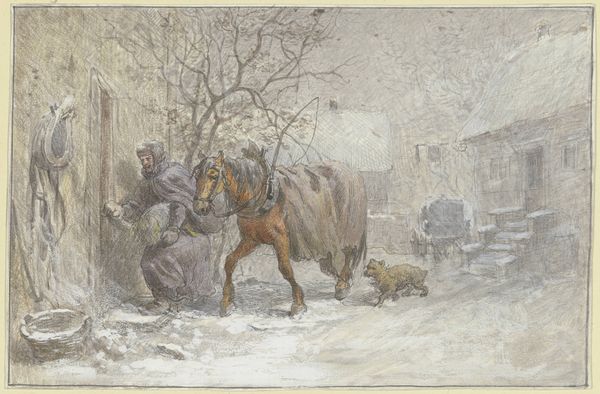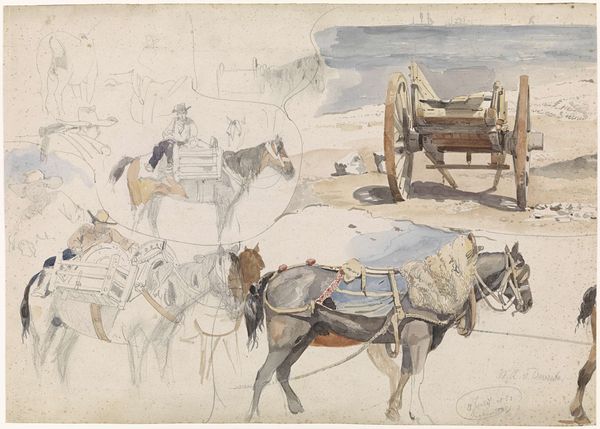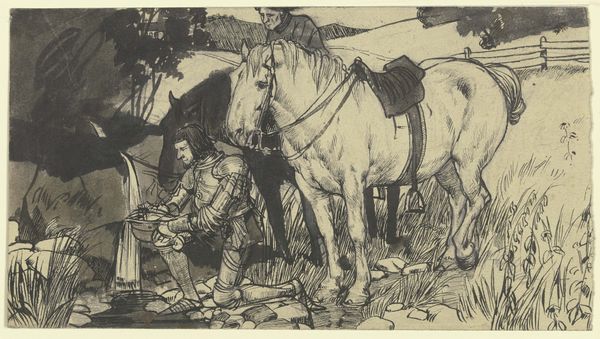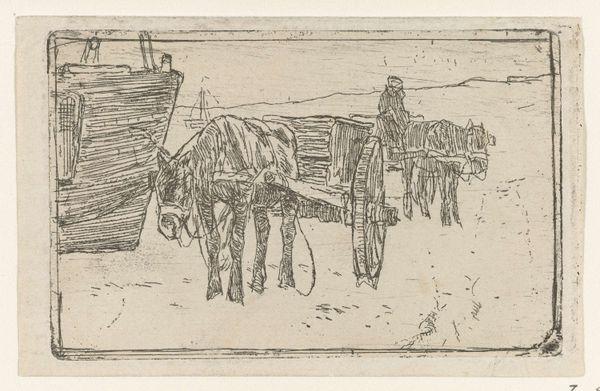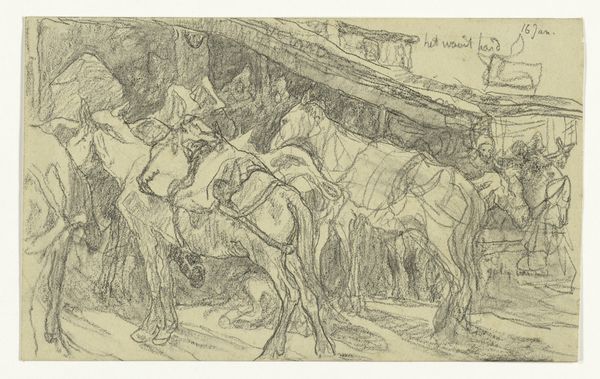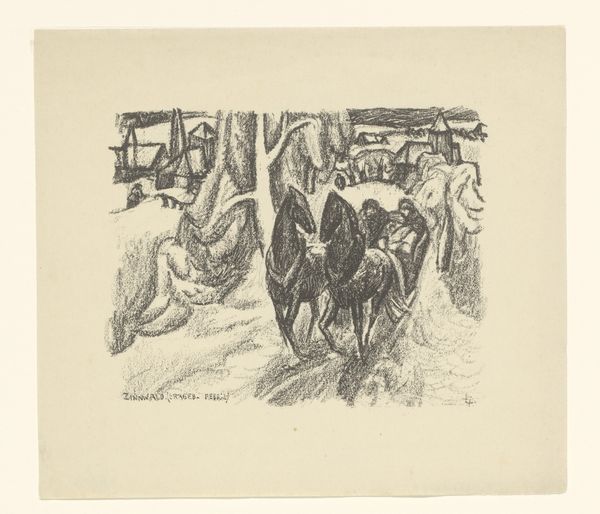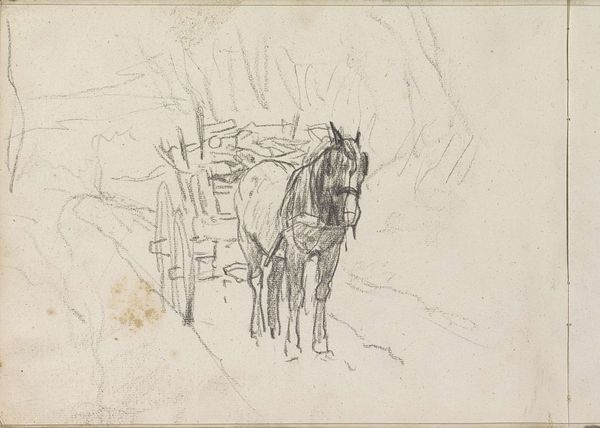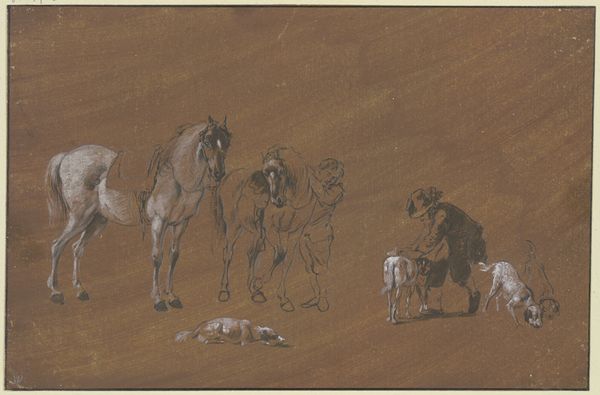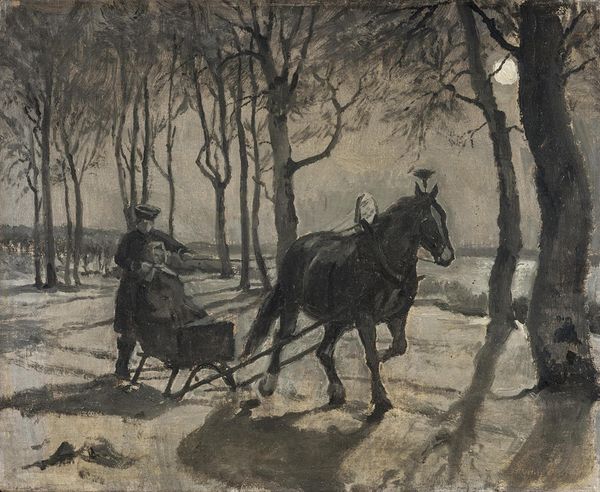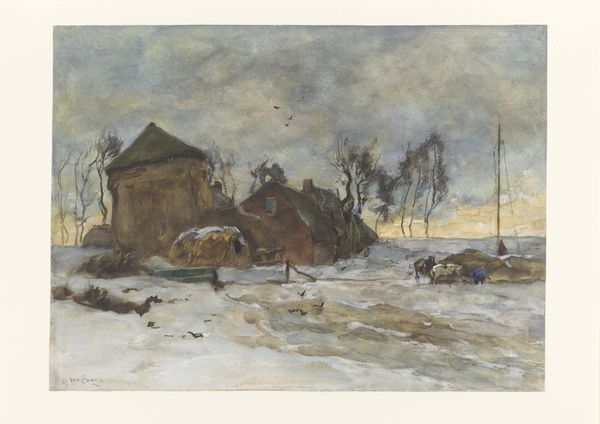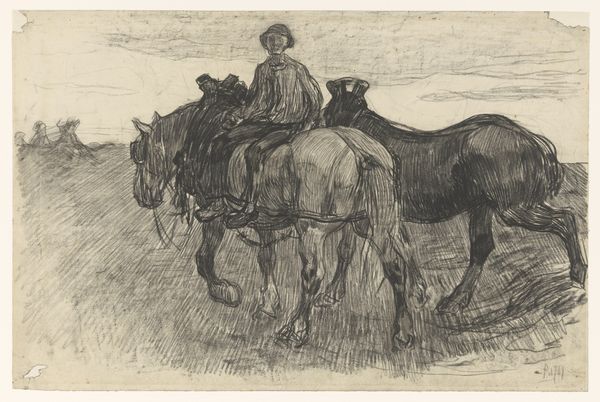
drawing, watercolor, pencil
#
drawing
#
pencil sketch
#
landscape
#
watercolor
#
coloured pencil
#
pencil
#
watercolour illustration
#
genre-painting
Dimensions: height 248 mm, width 308 mm
Copyright: Rijks Museum: Open Domain
Curator: Alfred Ost created this lovely genre scene from 1914. Entitled "Boerenwagen met twee paarden ervoor," it translates to "Farm wagon with two horses in front," executed in pencil and watercolor. Editor: The first thing that strikes me is the quiet stoicism of it all. The muted colors, the slightly drooping heads of the horses... there's a sense of weary determination in this wintery landscape. Curator: Yes, I think Ost captures a profound connection here, echoing imagery of the noble labor found across cultures—horses not simply beasts of burden but partners in shared hardship. Note the muted tones reflecting both literal greyness and a somber, almost elegiac atmosphere. Editor: Absolutely, and it brings up ideas about rural life then, the roles these animals played, and also their slow disappearance. Look at the working class person there; his reliance on these horses feels immense, as though he has put his faith in the natural world more than anything. Curator: Faith perhaps expressed as practicality and pragmatism, given their interdependence. See, how the artist depicts a specific iconography of labor but at the same time manages to transcend its temporal reality, resonating through the century. Editor: What does that dependency signify now, in light of increasing urbanization and climate concerns? Doesn't it beg questions about exploitation, of human by animal, in the name of livelihood? Does it speak to rural poverty and labour at the time? Curator: Certainly, the image evokes loaded considerations given our changed perspectives today, but one can't deny, either, an aspect of respect implied through careful draftsmanship. Ost emphasizes the strength, even nobility, of both animals and man. Editor: But it still reads to me like the social and historical weight—perhaps inevitability—that comes with agricultural poverty, rather than a heroic ideal. In a way the muted colours emphasize the drabness, perhaps to highlight that point. I love this quiet commentary, this picture, a story of labour. Curator: Ultimately, Ost's choice of imagery transcends, perhaps purposefully so, to touch us. These two worlds are joined, each a vital part to the other. Editor: It provides us the insight that without such partnership there'd have been a whole sector that couldn't survive; without these workers society, for sure, wouldn't have either. It's thought-provoking!
Comments
No comments
Be the first to comment and join the conversation on the ultimate creative platform.
